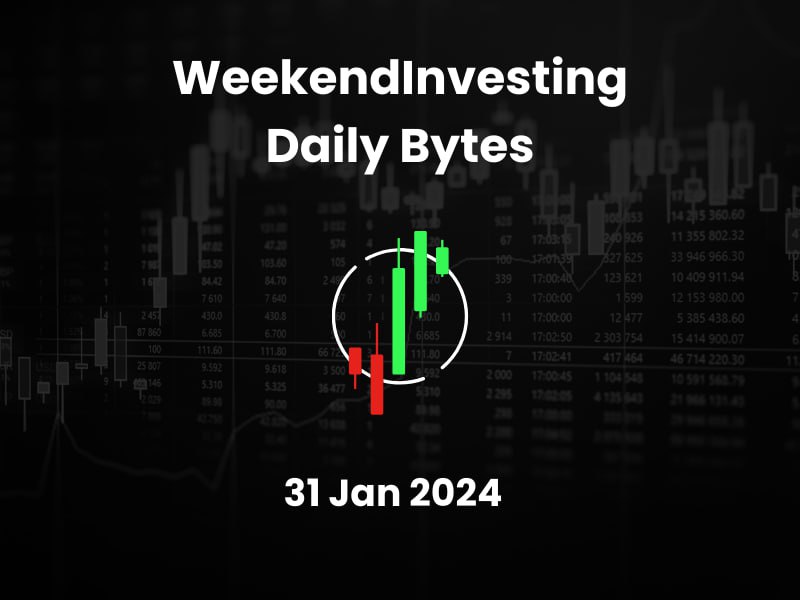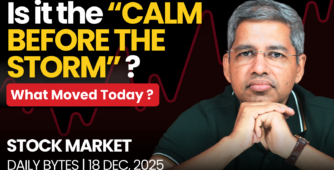How are the Markets Looking ?
As we approach the end of January 2024, the Nifty seems to be relatively flat for the month. The consolidation and choppiness in the market have been evident, with sharp gaps occurring in the second half of the month. Despite the volatility, the market has remained resilient and made efforts to break out of resistance zones.
In terms of market performance, today’s session saw the market gaining almost 1%, with the lower market cap segments showing relative strength. The conclusion of the Fed policy meeting and the anticipation of interest rate cuts will be key events to watch for further market trends. Additionally, the interim budget session also adds to the volatility in the market. It is crucial to stay cautious and carefully observe market movements during these periods.
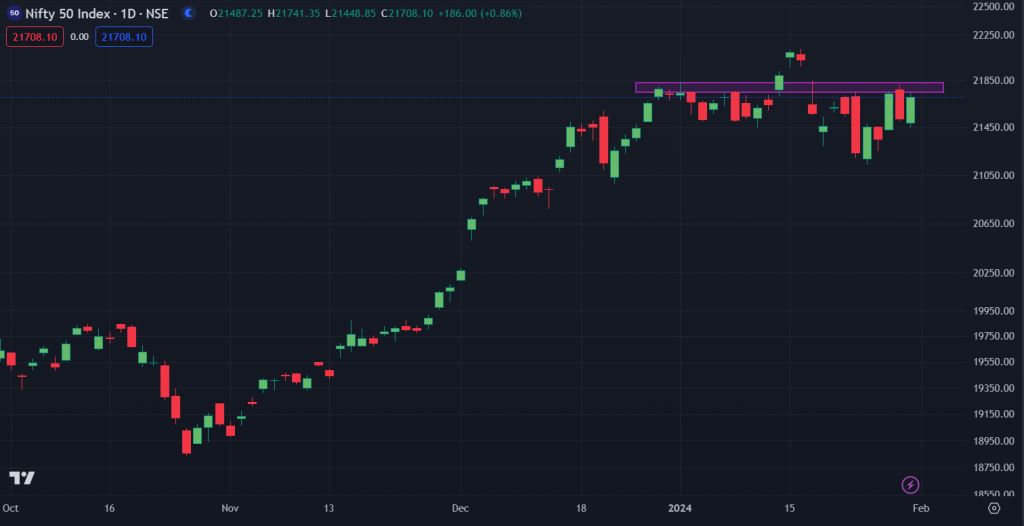
Nifty Heatmap
Looking at the heat map, most segments were in the green barring a few, Titan lost 1% and LNT lost 4% HDFC Bank gaining 1.27%, ICICI Bank 0.77%, SBI and Bajaj Finserv up around 2% each. Tech stocks like TCS and INFY were flat. Tata Motors was up 3%, Maruti was up 2%, Eicher also up 3.5%.
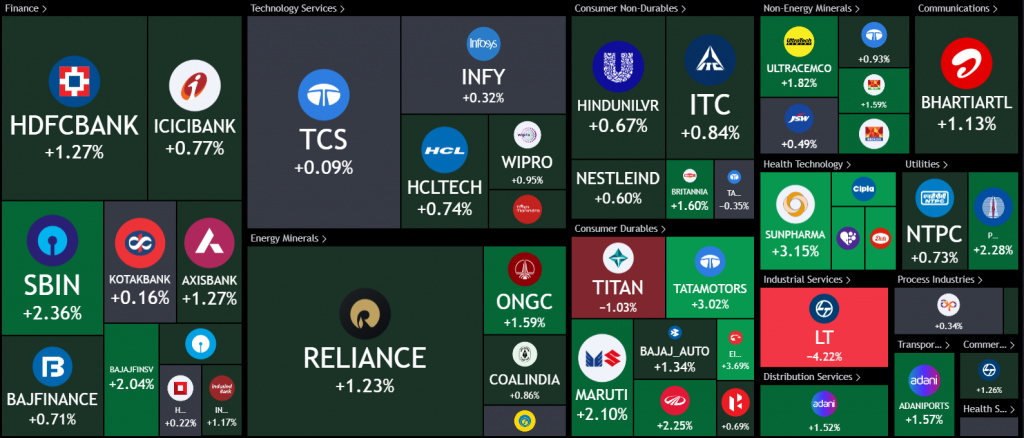
Sectoral Overview
Looking at the sectoral overview, most segments were in the green, with notable gains in pharma, real estate, and PSU banks. However, private banks and FMCG sectors showed weakness. Overall, the broader markets are looking positive and majority of the sectors we track have outperformed the Nifty.
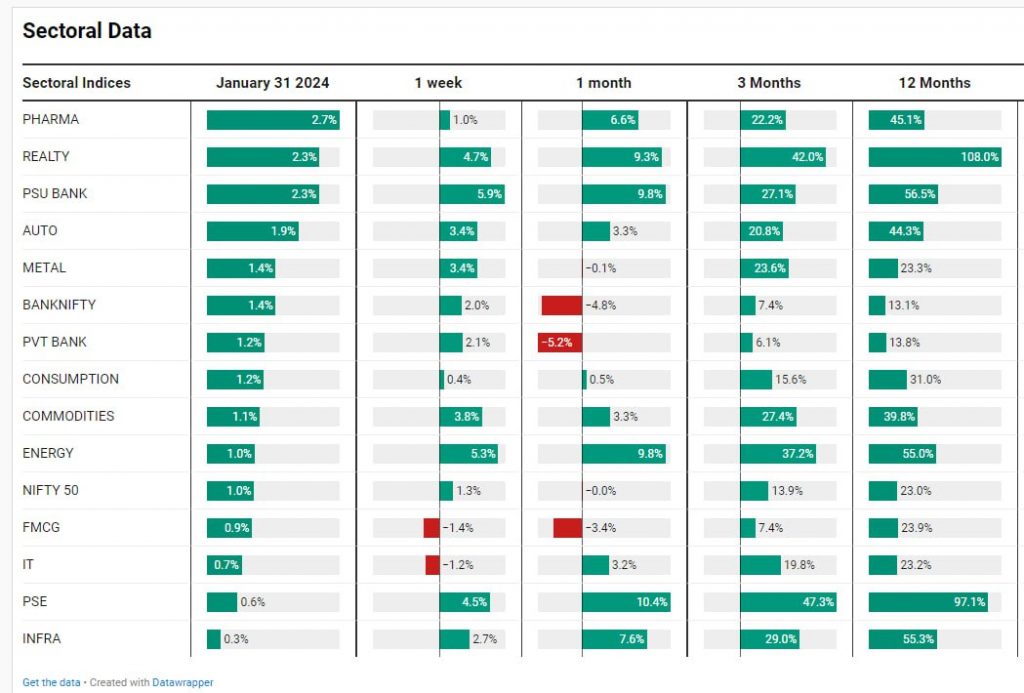
Mid & Small Cap Performance
Mid caps have hit a new all time high today. Every time there has been a correction in the market, the lower cap indices put on a quick recovery from the slump. Similarly even small caps have performed well today and we will be talking more about this below.
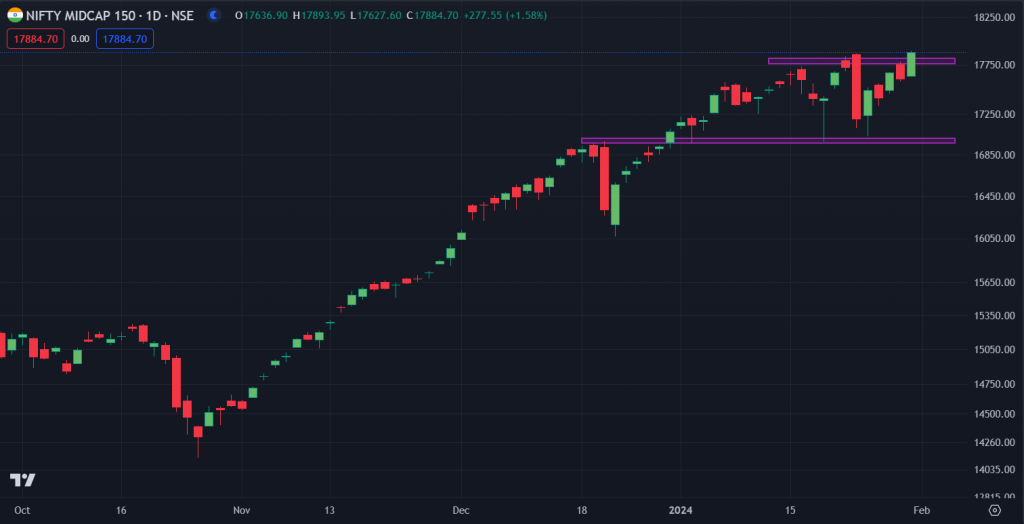
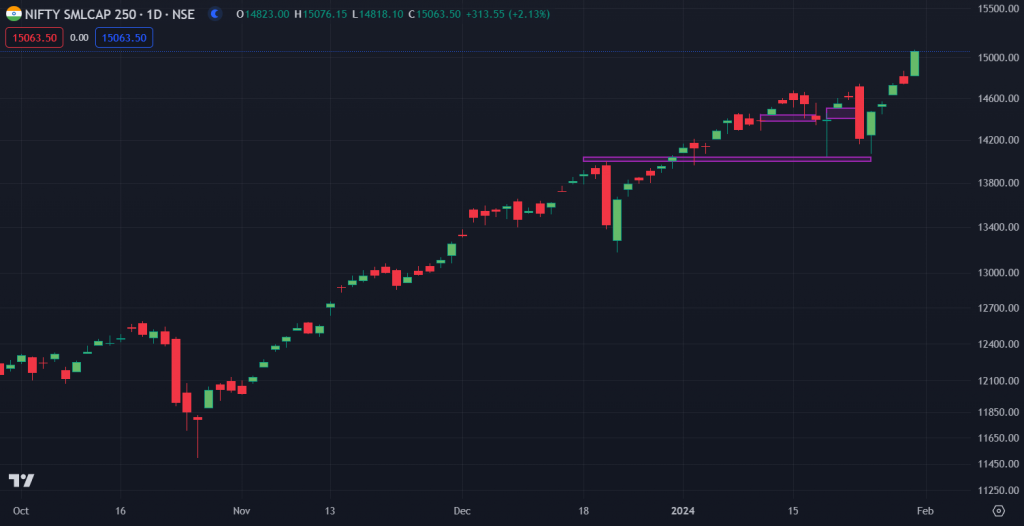
Nifty Bank Overview
Bank Nifty has also performed well today up 1.4% and is looking to come out of the 46,600 levels which is an important resistance point. Bank Nifty has been a bit slower than other indexes but we will have to wait patiently to see.
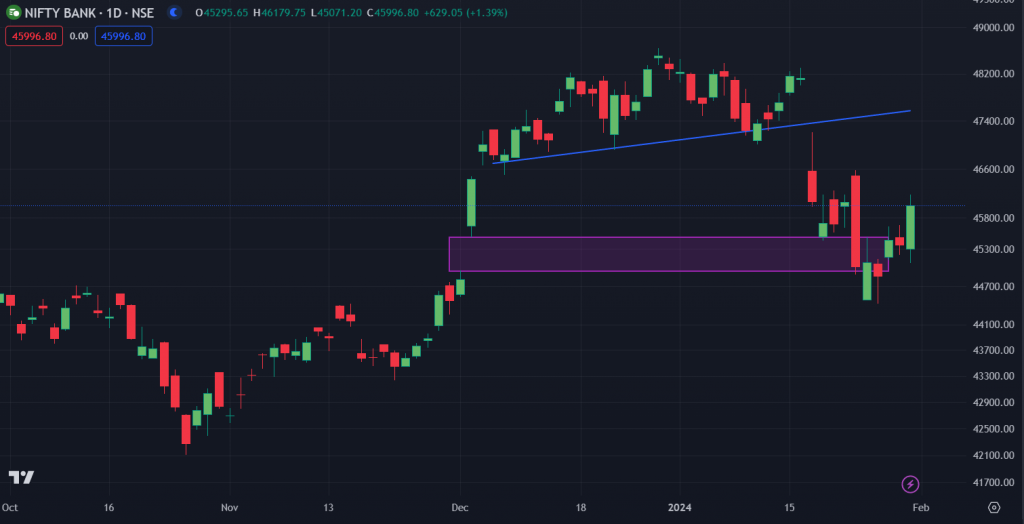
Highlights
The small cap index, which consists of smaller companies with a lower market capitalization, has had a lukewarm performance over the years. After making a top at about 6000 in 2008 before GFC, the index has remained relatively flat, with significant gains only during certain periods. For investors who started their journey before the global financial crisis in 2008, the cumulative annual growth rate (CAGR) has been around 2.25% over 15 years since the GFC and 6.24% over 15 years back from today. This performance might seem below average, but it highlights the nature of small cap investing – high risk, high reward. Pre GFC the index delivered 8x in 4 years and after that it consolidated. Since Covid, the index has delivered over 5x. During market cycles, small caps tend to experience significant gains in a short period, followed by consolidation or a prolonged flat phase. This shows that the small cap returns are lumpy in nature.
It is crucial to follow a systematic approach to investing and be clear about entry and exit points for stocks. This clarity and adherence to a strategy will help avoid panic and ensure a peaceful investing experience.
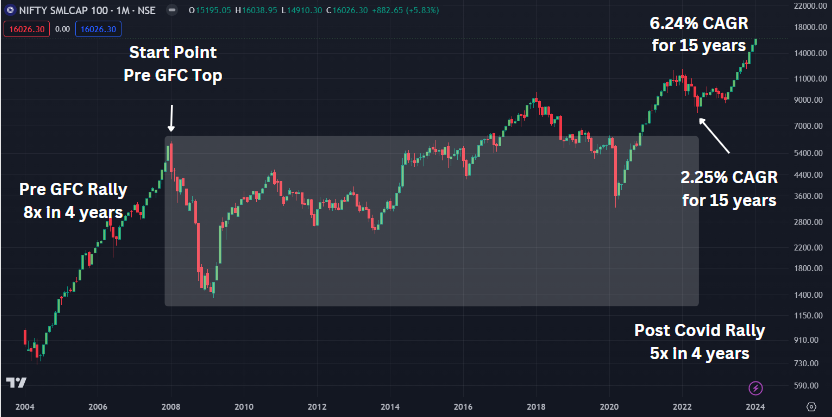
Looking at the historical RSI (Relative Strength Index) chart, we can see instances where the small cap index seems overheated at 90 RSI, leading to predictions of the end of a bull run. However, these predictions were often proven wrong, as the index continued to rally.
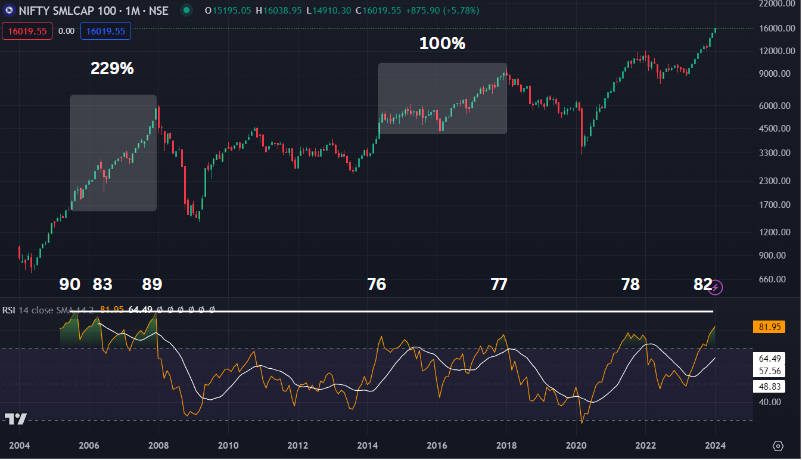
The current RSI level of around 82 suggests potential weakness or consolidation in the small cap index. While narratives may arise about the index being overheated or a possible pullback, investors with a rule-based approach and well-diversified portfolios need not worry. The index may remain choppy before the next leg up or experience a temporary fall. As long as portfolios are optimized for risk and there is a clear investment strategy in place, investors can navigate these potential fluctuations with confidence.

If you have any questions, please write to support@weekendinvesting.com

